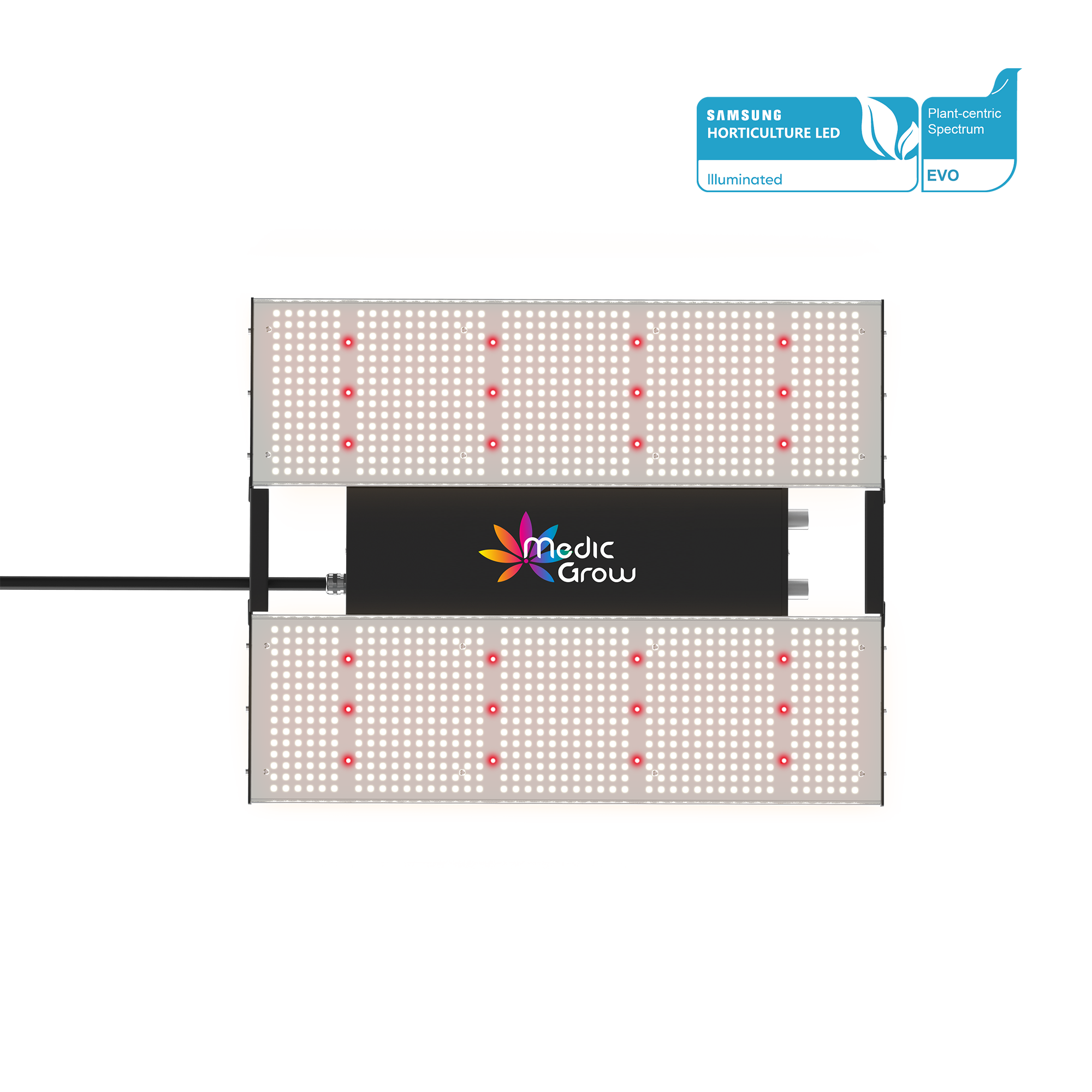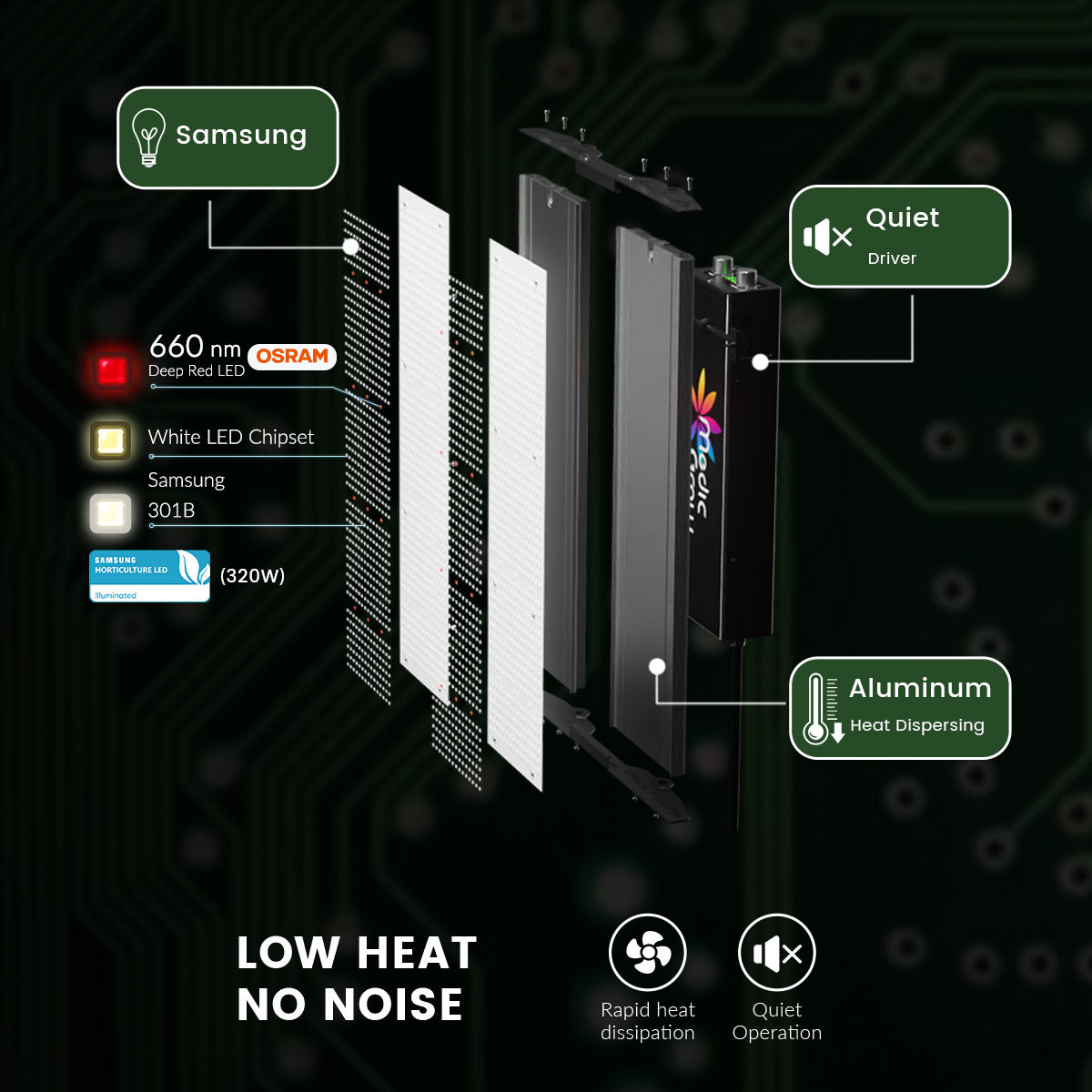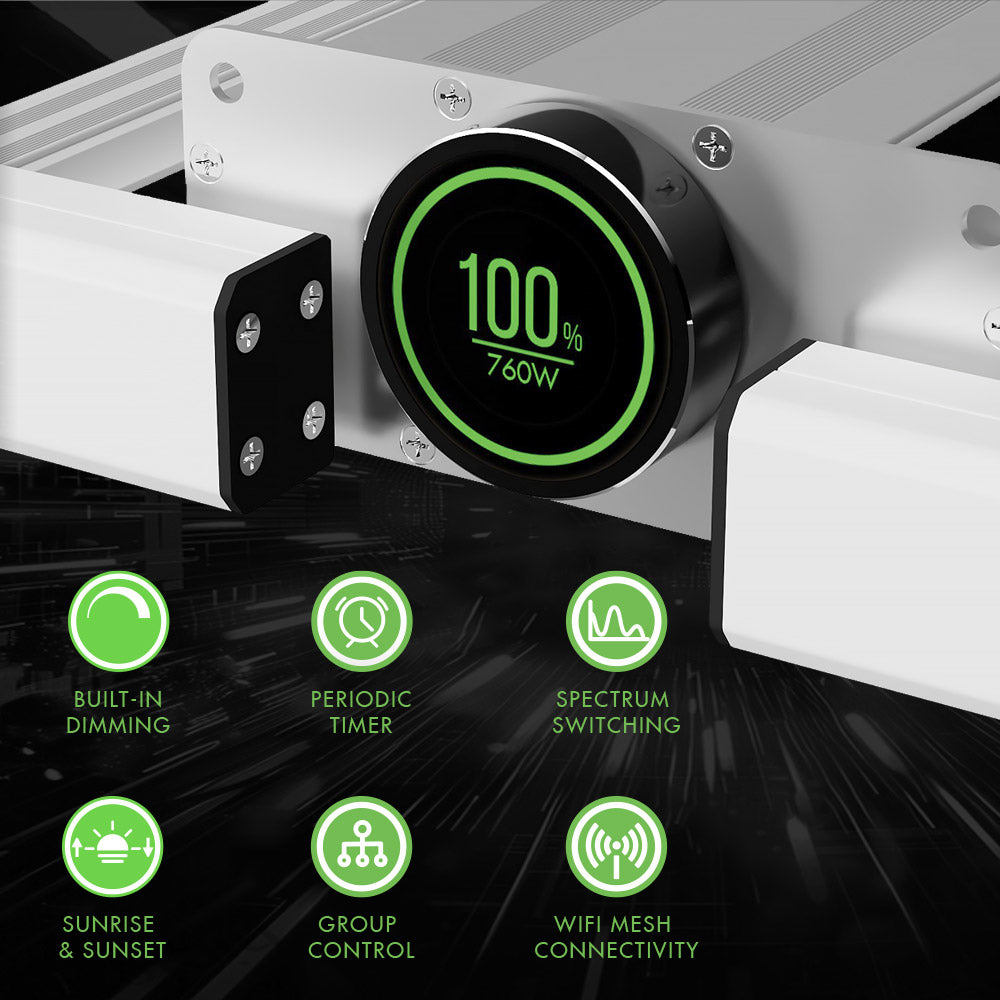
How to Use LED Grow Lights for Indoor Plants (2024 Update)
It has never been simpler to grow plants inside. You may grow various plants indoors with grow lights in any environment and at any time of the year. These grow lights are intended to replace natural sunshine in a way that promotes photosynthesis and offers the ideal color spectrum for a plant's growth.
However, new growers might not know how to use these full-spectrum LED grow lights properly for the best outcome. This article delves into what you need to know about using grow lights for indoor plants for quality yields.
- Part 1: Functions and Benefits of Using LED GROW LIGHT
- Part 2: How to Use Led Grow Lights For Indoor Plants
- Part 3: How to hang the LED grow light
- Part 4: How Long Should We Leave the Light on For Growing Green Herb
- Part 5: How to Measure Light Intensity
- Part 6: How to Choose the Best Grow Light?
- Part 7: Conclusion
Functions and Benefits of Using LED GROW LIGHT

Image Source:iStock
- Use less energy than normal lights
You may be able to reduce your electricity costs by using grow lights. UV Grow lights will help you save money on your power bill because they consume about 17% less energy than other types of lighting.
- Plant cultivation in any climate
Plants can be grown indoors under grow lights year-round. Regardless of the weather outside, you can grow plants indoors all year long using grow lights.
- Manage the light's intensity
Your plants' exposure to light and darkness is something you can regulate. This is crucial because plants require a specific level of darkness to develop. Grow lights allow you to choose how much light and darkness your plants receive.

The PPFD map of Medic Grow LED Grow Light Fold-800W grow lights shows the regular intensity of PPFD which strengthens the plants' growth
- Fast Growth
You may grow plants more quickly with grow lights. Compared to plants grown under natural light, plants cultivated under grow lights grow more quickly. This is so that plants may grow with the ideal amount of light, which grow lights give.
- Grow more flowers
You may grow more flowers by using grow lights. Flowers benefit from being grown under grow lights because they require more light than other plants do. Additionally, after flowers are cut, grow lights might help them endure longer.
How to Use LED Grow Lights For Indoor Plants
POSITION: For grow lights to have any impact, they must be relatively close and unhindered to a plant. Additionally, grow lights can cause plants to bend in the same direction that indoor plants do when they need more light.
DISTANCE: Generally speaking, plants need to be a few feet away from a grow light to reap the rewards.
Youtuber @Everest Fernandez has a comprehensive video describing how far should the grow light be from the plants.
DURATION: Grow lights should be on for at least 8 to 10 hours each day to be effective. Depending on the situation, this can change from one to sixteen hours. Because of this, LED growth lights are very popular. It is advisable to select an energy-efficient variety when using grow lights that must be left on all day.
TIMER: You might want to buy an automatic timer given that grow lights must be on for at least 8 to 10 hours each day. The light will be automatically turned on and off at the times you choose when you use a timer.

TIMER&DIMMER of Spectrum-X
How to hang the LED grow light?
- Locate the Best Installation Spot on Your Ceiling -
The plants should be directly above the grow light system distance for the light beams to reach your plants with grow tent kits.
- Place Marks on Holes and Drill Them
You can start marking the precise location where you're going to drill the holes once you have an idea of where you want to install your grow lights. You can hang your hangers from the ceiling with the aid of these holes. After installing these hangers, you can begin assembling the grow lamp.
- Hook Installation
Start by inserting a single hook into the ceiling hole you just made. Next, rotate the hook in a clockwise direction while exerting constant pressure. Once you've successfully forced the hook into the ceiling, you can stop twisting it.
- Set Up A Rope Ratchet
After the hooks have been set properly, you can add a rope ratchet to let you manage the height of the overhead lighting. The best tool for the job is a nylon rope ratchet.
- Hanging the Lights!
Once your ropes are in position, you may use extra hooks and s-screws to secure your lights to them. Additionally, you have to look for the rope height that benefits your plants. Consider this when choosing a light's distance from the plants.
How Long Should We Leave the Light on For Growing Green Herb
Keep plants under a minimum of 18 hours of growth light (also known as 18/6), when they are in the vegetative stage. On the other hand, if you're one of the growers who want their plant to get as big as it can, you can maintain it under 24-hour (24/0) indoor lighting.
It takes plants 12 hours of constant darkness before they begin to produce blooms. If not, they will stay in the vegetative state indefinitely. You can maintain your plants in this stage indefinitely as long as they receive at least 13 hours of light per day.
How Much Light (PPFD) Does Green Herb Need?
When in the vegetative stage, green herb plants need 16 hours of light, and when in the flowering stage, they need 12 hours. A grower has the option of adding CO2 or not.
The PPFD for normal green herb growth ranges from 100 to 300 μmol/㎡/s for seedlings, 400 to 600 μmol/㎡/s for vegetation, and 800 to 1,000 μmol/㎡/s for flowers.

This image originated from iStock editor @Bezvershenko.
When adding CO2, the seedling stage requires a PPFD of 100 to 300 μmol/㎡/s, while the vegetative stage calls for a PPFD of 800 to 1000 μmol/㎡/s and 400 to 800 ppm CO2. 800–1400 ppm CO2 and 1,000–1,500 μmol/㎡/s PPFD are needed during the flowering stage. When growing indoors, it is best to speak with a knowledgeable gardener before adding carbon dioxide. Sometimes the desired outputs may not be justified by the higher inputs brought on by the use of CO2.
How to Measure Light Intensity
There are several methods for measuring light intensity, including.
- Integrating Sphere Spectroradiometer
The light is emitted and then reflects off the sphere before exiting through the aperture where the data is collected.
- Goniophotometer
In goniophotometers, the light from a source is reflected from a mirror at various angles. At those angles, measurements are made to determine how the light emanates from the source. Due to the directed and incongruent spatial distribution of LED products and HID fixtures, these instruments are now more frequently utilized to measure these items.
- Light Meter
Light Meter Based on the distance the meter is held from the light source, this will calculate the number of moles (mols) the source produces. In other words, this calculates how much light is produced at a certain distance from the light source.
How to Choose the Best Grow Light?
It may seem intimidating to choose a hydroponic grow light, but it doesn't have to be. Here are a few simple methods to help you locate the ideal grow light.
- Select your crops.
Making selections about the type of lighting you'll require will be much simpler if you plan the crops you'll plant in advance.
- Budget
It would also be simpler if you had a budget in mind before you go shopping. Think about your intended energy expenses and the required amount of light.
- Choose the Type of Bulb
Fluorescent, LED and HID bulbs are the three most prevalent types used in grow lights.
Since incandescent lamps emit excessive heat that can burn plants, they aren't included on the list.
- Select a spectrum
It's crucial to remember that some targeted spectrum LED lights for indoor plants have a switch like Medicgrow NEO-1000W grow lights that enables them to alter colors, making them suitable for use at various phases.
- Look at Intensity
The proper amount of light must be provided for the number of plants you have at each point of their growth cycles, therefore intensity is crucial.
- Determine the necessary coverage
Determine how many you'll need to buy after you've reduced your list of probable prospects. 20 to 40 watts of coverage per square foot are often advised.
- Think about your height and mobility
Before making a decision, think about how movable you want your grow light to be and how distant it will be from your plants. To maintain a constant distance from the plants as they grow, many grow lights are movable.
An example of one of the best LED grow lights is the MINI SUN-2, a compact full-cycle LED grow light with high efficacy that is ideal for racks or grow tents.
With 1350 WHITE LEDs and 24 OSRAM RED LEDs, it can efficiently produce the best V1 full-spectrum for higher yields. It also provides uniform lighting across a maximum bloom coverage. What’s more? It only consumes 320 watts! The MINI SUN-2 150W grow light has a superior PPFD value of 2385μmol/㎡/s, a PPF amount of up to 896 μmol/s, and an efficacy of 2.8 μmol/J.
Conclusion
Growing your plants has a lot of advantages. However, understanding the many light cycles involved in the planting and growth of your crop is the only way to ensure the optimum harvest and, thus, the greatest profit from homegrown plants.
To become completely comfortable with the plants light cycles we have covered, you will need to conduct some experimentation. However, if you are new to green herb production, you can follow the advice above and be confident that you will succeed.
Related Post:
Grow Lights Recommendation 2024
Featured Products
Blog Posts
Contact Us with Any Idea!
- Choosing a selection results in a full page refresh.
!

































